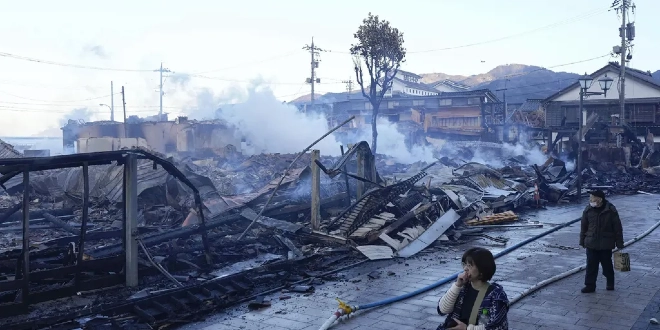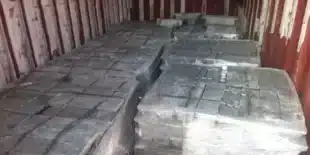A woman was rescued from the debris three days after a series of strong earthquakes began shaking Japan’s western coast. Despite ongoing rescue operations, the death toll had risen to at least 94 by Friday, while the number of missing decreased to 222.
In Suzu, one of the most affected cities in Ishikawa Prefecture, an elderly man was extracted alive from a ruined house on Wednesday. His daughter’s calls of “Dad, dad” filled the air as firefighters carried him out on a stretcher, commending his resilience since Monday’s 7.6 magnitude quake.
In Ishikawa, the fatalities included 55 in Wajima and 23 in Suzu, with others reported in five adjacent towns. Over 460 people have been injured, with at least 24 in serious condition.
The Earthquake Research Institute at the University of Tokyo reported a significant shift of the western Japan coastline, with some areas moving up to 250 meters (820 feet) towards the sea.
The earthquakes caused a large fire in Wajima, along with tsunamis and landslides. Isolated areas with no access to water, food, blankets, or medicine heightened concerns.
The United States pledged $100,000 in aid, comprising blankets, water, and medical supplies, with more assistance promised. Japanese baseball player Shohei Ohtani also pledged support for the Noto region.
Thousands of Japanese troops are aiding the hardest-hit areas on the Noto Peninsula. However, experts warned of potential diseases and fatalities in evacuation centers, housing around 34,000 displaced individuals, many elderly.
Masashi Tomari, a 67-year-old oyster farmer in Anamizu, Ishikawa, described the challenges of sleeping on the floor with inadequate heat and blankets.
Residents like Tomari and store owner Sachiko Kato in Anamizu are already considering rebuilding despite the destruction. Kato, dealing with damaged premises and lacking running water, remained hopeful about the community’s recovery.
Ishikawa has experienced numerous aftershocks since the quake. Japan, known for its seismic activity, is bracing for more tremors, with rain and snow forecasted.
The quake-affected region is renowned for traditional crafts like lacquerware, knives, and kimono fabric. Tsutomu Ishikawa, head of a resin company, lamented the damage to his workshop and the loss of lovingly crafted products.
Sachiko Takagi, a kimono shop owner in Wajima, expressed concern for the future of her historic street, lined with traditional stores, acknowledging the difficulties faced by those who have lost everything in the disaster.


